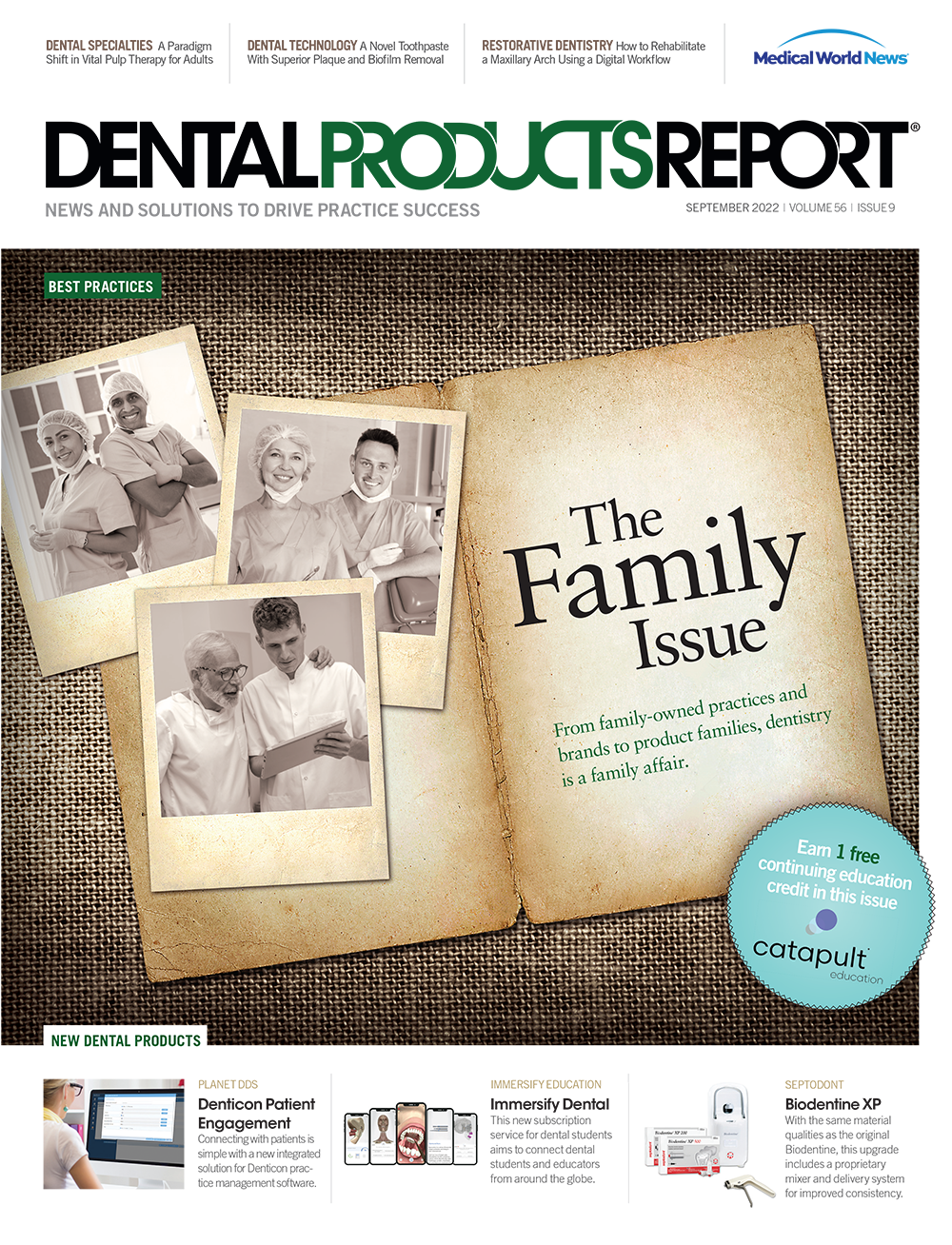A Novel Toothpaste With Superior Plaque and Biofilm Removal
NanoClean from Protegera, Inc, is a toothpaste formulated with spruce-tree microfibers that is more effective than the average product and is powered by scientific innovation.
A Novel Toothpaste With Superior Plaque and Biofilm Removal

A fiber network sounds like something that connects a computer to the internet, but at Protegera, Inc, the fibers are all-natural, microscopic cellulose structures derived from Norway spruce trees that happen to be ideal for mechanically removing oral plaque and biofilm. The company has developed a microstructured fluid platform that is formulated to offer superior plaque and biofilm removal, leading to better oral health. I sat down with founder and head of R&D, Chairman Mohamed E. Labib, PhD, and CEO Carmine J. Durham to find out more.
Lou Shuman, DMD, CAGS: Tell me about your journey as an inventor, scientist, and visionary.
Mohamed Labib, PhD: After earning a PhD in physical chemistry from McGill University in Canada, I worked on multiple technologies and discoveries for RCA Laboratories, General Electric, NASA, and SRI International (formerly Stanford Research Institute).
While working for NASA and SRI International, one issue we addressed was mitigating the health impacts of harmful biofilms. We received $3 million in funding from the National Institutes of Health (NIH), which ultimately led to the discovery of our microfibrillated cellulose technology platform, which is a novel, microstructured fluid technology that mechanically removes biofilms for dental and medical applications.
We initially discovered that our technology was ideal for improving the cleaning of the tiny channels in endoscopes, which is critical to preventing the spread of infection between patients.
Carmine Durham: We are very excited about our latest project, called NanoClean, a fluoride toothpaste based on the microstructured fluid and microfibrillated cellulose platform. This revolutionary approach to toothpaste provides ideal physical properties for the mechanical capture and removal of biofilm from tooth surfaces, gumline, and interproximal spaces with normal brushing. We have established the company, Protegera, Inc, to focus on developing and commercializing NanoClean toothpaste and other dental products with this groundbreaking technology.
LS: How is NanoClean toothpaste different than the leading commercial brands?
CD: While there have been minor ingredient and formulation improvements in toothpaste products since the introduction of fluoride, including desensitizing ingredients and whitening and tartar control claims, there really hasn’t been any truly novel innovation in toothpaste products in decades. Dentists and hygienists know that commercial toothpaste makes brushers’ mouths feel good and freshens breath, but it doesn’t add much benefit in removing plaque and biofilm. It’s largely the mechanical action of the toothbrush that does the work. NanoClean toothpaste has demonstrated it can deliver 90% or more plaque removal mechanically and thus avoid disturbing the oral flora with antimicrobial agents or chemicals.
ML: NanoClean is derived from all-natural, safe, microfibrillated cellulose made from Norway spruce trees, an abundant natural resource in Scandinavia. Cellulose is generally recognized as safe by the US Food and Drug Administration and approved as a food additive. We formulate these fibers into a microstructured network that flows easily across the tooth surface and completely removes plaque as the fibrillated cellulose moves over the tooth’s surface and interproximal spaces, dragging plaque and biofilm away. It’s remarkably effective at removing plaque even without the mechanical action of a brush. Commercial toothpastes use lubricating polymers that make the brush slide over your teeth, but they also slide over the biofilm. With NanoClean, the microfibrils create friction that grabs and removes biofilm, even in areas where the bristles don’t touch. It generates 10 to 100 times more shear stress and frictional forces than current toothpastes, and our material doesn’t break down to an ineffective saliva slurry during brushing like commercial toothpaste. The cellulose microfibrils are very tiny; you can’t see them or feel them in your mouth.
We have a much higher biofilm removal rate without using chemicals, antibiotics, or antimicrobials that disturb the mouth’s microbiome. NanoClean is sulfate-free, paraben-free, and silicon-free. While far more effective at removing biofilm, NanoClean toothpaste has the same mouth feel and pleasant taste that patients enjoy in familiar commercial toothpaste brands.
LS: What drives your scientific innovations?
ML: I have always had a passion for creating new things and have a strong desire to create products that will someday improve the lives of millions of people. Harmful bacteria in the oral cavity have also been linked to many serious systemic diseases, from heart disease to Alzheimer disease to inflammation. Removing those harmful bacteria may result in less inflammation and fewer toxins throughout the body. I anticipate that NanoClean probably will be one of my most impactful products.
CD: We are thrilled to be able to introduce this new technology to dental professionals and their patients, and the support and adoption of NanoClean by the dental community is critically important to us. Over time, we believe our microfibrillated cellulose technology will change the paradigm of today’s toothpaste and contribute to better oral health globally.
